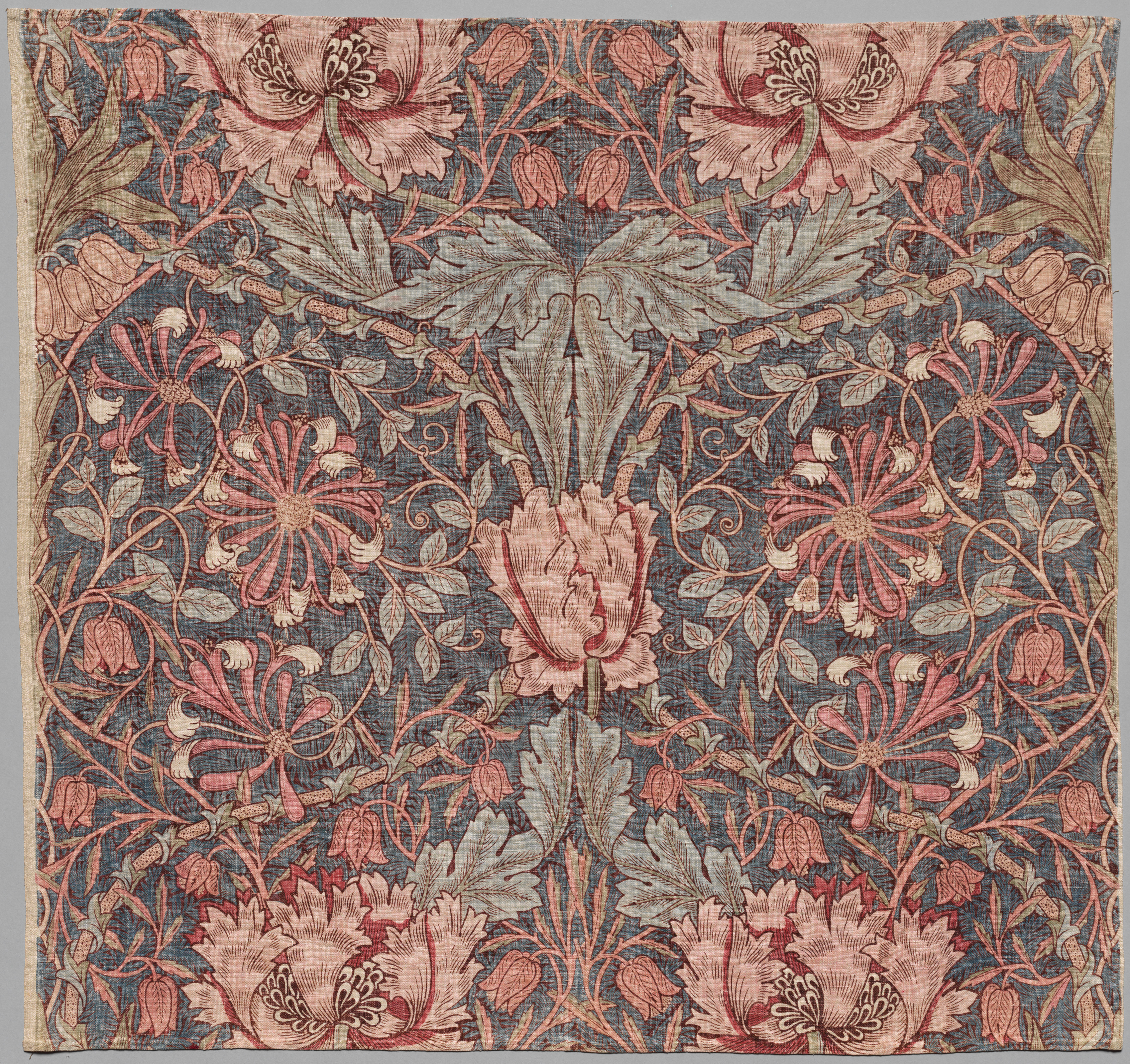The Cleveland Museum of Art
Collection Online as of April 19, 2024

Honeysuckle
Early 20th century
designer
(British, 1834–1896)
Overall: 87 x 90.5 cm (34 1/4 x 35 5/8 in.)
Gift of Mrs. Henry Chisholm 1937.697
Location: not on view
Description
William Morris’s daughter May called Honeysuckle “the most truly Morrisian in character of all his pattern-making . . . the most mysterious and poetic—the very symbol of a garden tangle.” Like many Morris textiles from this period, Honeysuckle has a mirrored pattern. At 29 3/4 inches high and 34 3/4 inches wide, this repeat was unusually broad, spanning almost the entire width of the loom. Morris believed that large patterns were more restful to the eye than small patterns, even when used to decorate modestly sized rooms. Designs from this period are a testament to the delight he took in his garden at Kelmscott Manor; he favored the charm of native English flowers above exotic specimens.- Parry, Linda. William Morris Textiles. London: Weidenfeld and Nicolson, 1983. p. 150, no 21Korkow, Cory. "Textiles." IN William Morris: Designing an Earthly Paradise. Cory Korkow and Victoria Hepburn, 8-23. Cleveland, Ohio : Cleveland Museum of Art, 2017. Reproduced and mentioned: pp. 11, fig. 5
- William Morris: Designing an Earthly Paradise. The Cleveland Museum of Art, Cleveland, OH (organizer) (October 24, 2017-January 14, 2019).Transitions: 19th and Early 20th Century French and English Textiles. The Cleveland Museum of Art, Cleveland, OH (organizer) (June 3-November 16, 1986).
- {{cite web|title=Honeysuckle|url=false|author=William Morris|year=Early 20th century|access-date=19 April 2024|publisher=Cleveland Museum of Art}}
Source URL:
https://www.clevelandart.org/art/1937.697